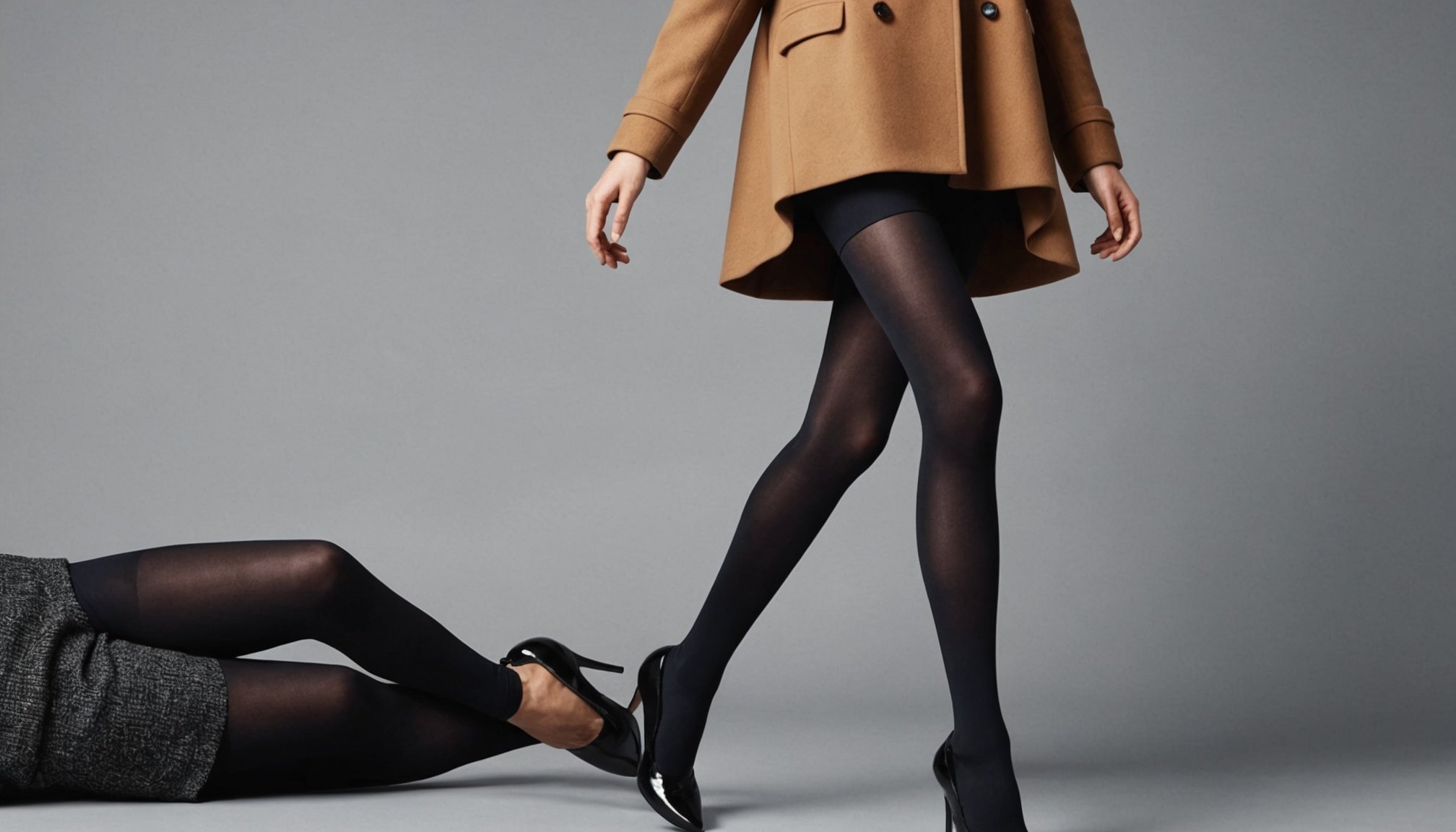Understanding Cold Weather Tights
Cold weather tights are a crucial component in winter wardrobes due to their ability to provide warmth and comfort during frigid conditions. The effectiveness of these tights primarily hinges on their insulation properties. Proper insulation is essential to retain body heat and offer protection against cold winds.
Importance of Insulation in Cold Weather Tights
Insulation properties in thermal tights typically stem from the materials used in their construction. These materials are specially designed to trap heat while still allowing adequate breathability, making them suitable for various cold settings. Without effective insulation, even the warmest exterior layers can fall short in maintaining body temperature.
Also read : Elevate your style with affordable gucci blazers for men
Overview of Material Types and Their Insulative Properties
Different materials offer varying degrees of warmth. For instance, wool and fleece-lined options provide high insulation, while synthetic fibers offer improved flexibility and durability. Each material type has distinct advantages, with wool being notable for its natural temperature regulating capabilities, while synthetic blends improve moisture-wicking and faster drying capabilities.
Factors Influencing Overall Warmth and Comfort
Beyond materials, the overall warmth and comfort of cold weather tights also depend on fit and construction. A snug fit ensures minimal heat loss, complementing the insulating properties of the fabric. Additionally, factors such as seam placement and waistbands can further influence comfort levels in varied activities.
Also read : The definitive handbook for selecting the perfect shawl to keep you cozy on uk coastal evenings
Key Materials for Cold Weather Tights
Choosing the right fabric materials for cold weather tights is essential for warmth and comfort. The composition of these materials influences the balance between breathability and insulation, crucial for maintaining the desired body temperature during freezing conditions.
Types of Fabrics: An Overview
Cold weather tights utilize a myriad of fabrics, each with unique properties. Breathable fabrics, such as certain synthetic fibers, ensure that moisture is wicked away, preventing discomfort and potential cold from dampness. Meanwhile, fleece-lined tights are well-regarded for their superior insulative abilities, offering a cozy shield against the chill.
Breathability vs. Insulation
Understanding the trade-off between breathability and insulation is key. Natural fibers, such as wool, naturally regulate temperature but can be less flexible. On the other hand, synthetic materials often provide better flexibility and moisture management, making them versatile for various activities.
Fleece-lined Tights: Benefits and Drawbacks
Fleece-lined tights are championed for trapping warmth efficiently, yet they might lack the breathability compared to non-fleece alternatives. They offer substantial warmth for low activity levels but might cause overheating during intensive activities. When selecting fleece-lined options, considering activity type and personal comfort is advisable.
Thickness and Layering Options
Choosing thick tights is crucial in balancing heat retention and mobility during cold weather. The thicker the tights, the better they insulate, but they might limit flexibility. This is why it’s essential to match thickness with activity level. For intense activities, thinner yet well-insulated tights might be preferable to maintain agility and comfort. Conversely, less active scenarios might allow for thicker options to maximize warmth.
Layering tights is an effective way to enhance thermal retention. By layering, you create air pockets that trap heat, much like how a thermos keeps liquids warm. Start with a base layer that wicks away moisture, then add a thermal middle layer. If extreme cold is a concern, consider a weather-resistant outer layer.
Guidelines for layering effectively include ensuring each layer fits well to prevent bulkiness and improve ease of movement. Remember, layering isn’t only about warmth. It’s also about flexibility, as you can add or remove layers based on changing temperatures. Whether you’re hiking or commuting, thoughtful layering can significantly boost your protection against the chill.
Styles of Tights for Cold Weather
In chilly climates, selecting the right styles of tights can make a significant difference in your comfort. The choice often comes down to personal preference, activity type, and the desired balance between practicality and fashion.
Footed vs. Footless Tights
When choosing between footed and footless tights, consider your preferred level of warmth. Footed tights provide extra coverage for the feet, offering additional protection in freezing conditions. They can be particularly beneficial for outdoor activities where complete warmth is vital. Conversely, footless designs offer greater versatility and can be worn with various footwear. This style might suit indoor activities where full insulation isn’t necessary.
High-waisted Options: Comfort vs. Style
High-waisted tights are another popular choice, offering enhanced coverage and support around the waist. They ensure the tights stay in place during movement, which can be particularly handy for outdoor adventures or workouts. This option marries comfort with style, making them suitable for both athletic and casual settings, depending on your layering and outerwear choices.
Top Brands for Cold Weather Tights
When searching for the best tights brands, it’s essential to consider factors like warmth, durability, and overall performance. Reputable brands have made a mark by offering exceptional comfort and reliability. These trusted brands often fuse advanced technology with high-quality materials, ensuring their tights excel in various conditions.
Performance tights from renowned companies tend to balance style and function, making them ideal for both casual and athletic use. For instance, some brands excel in creating seamless designs that enhance mobility without sacrificing warmth. Others might focus on high-waisted options that offer additional support and coverage.
Evaluating price points versus performance is crucial. While higher-priced tights often promise superior materials and features, affordable options can offer good value with adequate performance. A comparative analysis helps identify specific advantages, such as enhanced moisture-wicking capabilities or innovative thermal technologies that justify the cost.
When selecting the best option, it’s beneficial to explore customer feedback and professional reviews. These insights provide a practical understanding of how the tights perform in real-world scenarios, guiding informed decisions tailored to personal preferences and needs.
Product Recommendations and Reviews
In the realm of product reviews, identifying the best cold weather tights can significantly enhance your winter wardrobe. User experiences shed valuable light on the most effective thermal tights available.
Best Thermal Tights for Women
Top-rated thermal tights often emerge from brands boasting advanced technology coupled with quality materials. These tights excel in trapping body heat while maintaining a comfortable fit. Look for features such as fleece lining or moisture-wicking capabilities to ensure warmth without sacrificing breathability.
Recommended Tights for Sports and Outdoor Activities
When engaging in sports or outdoor activities, choosing tights designed specifically for such environments is crucial. Performance tights that emphasize flexibility, durability, and temperature regulation are ideal. Many trusted brands design tights with reinforced seams and stretchable fabrics, optimizing movement and comfort.
User Reviews and Real-life Experiences
Real-life user reviews offer practical insights into how these tights perform in diverse conditions. Users often highlight factors like comfort, fit, and warmth in their feedback, helping others make informed choices. Whether it’s tackling cold weather hikes or staying cozy during a morning jog, these experiences provide invaluable guidance for selecting the perfect pair.
Maintenance and Care for Cold Weather Tights
Maintaining cold weather tights is essential for ensuring their longevity and effectiveness. Proper tights care can prevent damage and preserve the insulative and breathable qualities critical in these garments. Begin by following specific washing instructions provided by the manufacturer, which often recommend using a gentle cycle with cold water and a mild detergent. Hand washing is advised for delicate materials or intricate designs to avoid wear and tear.
After washing, minimize the risk of shrinking or fabric degradation by air drying your thermal tights. Avoid direct sunlight and high heat settings which can warp the fabric or compromise the elasticity. Furthermore, avoid fabric softeners as they can impair the breathability of certain materials.
For storage, folding tights neatly in a drawer or using hanging storage can help maintain their shape and prevent snagging. Consider placing them in a breathable garment bag if stored for extended periods. Through these longevity tips, you can extend the life and effectiveness of your cold weather tights, ensuring they remain a reliable part of your winter wardrobe.











